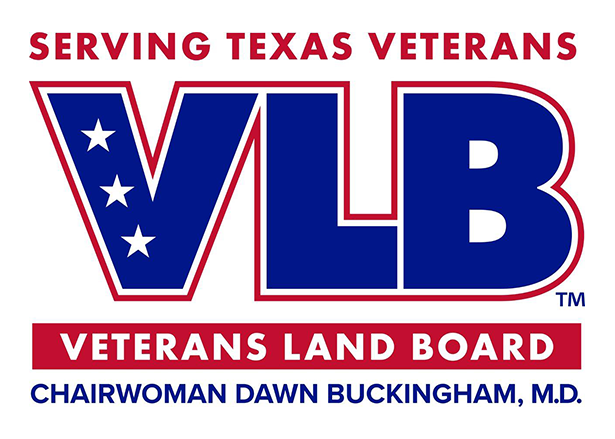Funds to improve drainage infrastructure approved for Kleberg County and the city of Kingsville
Today Texas Land Commissioner George P. Bush and County Judge Rudy Madrid announce the Texas General Land Office (GLO) approved more than $46 million in flood mitigation projects to improve drainage infrastructure in Kleberg County and the City of Kingsville. These infrastructure projects will directly benefit thousands of residents in a majority low-to-moderate income (LMI) area that has faced repetitive storm damage in 2016 and in 2017 with Hurricane Harvey.
“Texas leads the nation in repetitive flooding that affects counties across our state,” said Commissioner Bush. “This first round of mitigation funding represents a historic investment in protecting coastal communities, minimizing environmental impacts of severe storms, reducing obstacles to a fast and safe evacuation of hazard areas, preserving public and private emergency response capability, and minimizing disruption to utilities. These large-scale drainage infrastructure improvements in Kleberg County will benefit residents – especially low-to moderate income families – for generations to come.”
"For large portions of our county, the current drainage systems and infrastructure just aren't adequate to deal with heavier and heavier storm events," said Kleberg County Judge Rudy Madrid. “Unfortunately, this leaves Kleberg County and the City of Kingsville very vulnerable to natural disasters. This $46 million in funding from Commissioner George P. Bush and the GLO will be instrumental in upgrading our drainage systems to prevent flooding, and thereby help protect lives, safety, and property."
In May 2020, Commissioner George P. Bush announced the kick-off of the application process for the first round of more than $2.3 billion in Community Development Block Grant Mitigation (CDBG-MIT) funds from the U.S. Department of Housing and Urban Development (HUD) to protect Texas communities hit by Hurricane Harvey and severe flooding in 2015 and 2016. During the first round, the GLO conducted three competitive application programs from the CDBG-MIT Action Plan. Those programs include:
- 2015 Floods State Mitigation Competition – GLO awarded $31,426,781 to four grantees.
- 2016 Floods State Mitigation Competition – GLO awarded 21 grantees with $135,462,438.
- Hurricane Harvey State Mitigation Competition Round 1 ($1 billion of $2,144,776,720 total).
Applications closed for the first round of funding October 28, 2020, and the GLO evaluated all 290 submitted applications in accordance with the HUD approved scoring criteria. Eligible applications with the highest scores were awarded funds. The second round of the competition will award the remaining $1,144,776,720 in mitigation funding to Hurricane Harvey eligible entities.
HUD defines mitigation as activities that increase resilience to disasters and reduce or eliminate the long-term risk of loss of life, injury, damage to and loss of property, and suffering and hardship, by lessening the impact of future disasters. HUD requires that at least 50% of total funds must be used for activities benefiting low- to moderate-income (LMI) persons.
The State of Texas CDBG Mitigation Action Plan: Building Stronger for a Resilient Future outlines the use of funds, programs, eligible applicants, and eligibility criteria as required by HUD. The plan was sent to HUD on February 3, 2020, after an extraordinary public outreach effort including a 50-day public comment period and eight regional public hearings, far-surpassing HUD requirements. HUD approved the plan March 31, 2020. For more information, please visit recovery.texas.gov/mitigation.
Kleberg County: Drainage Improvements Project - $10,000,000
LMI Percentage: 52.19 %
The project will rehabilitate major drainage channels and outfalls which in its current condition is such that floodwaters do not drain from the city quickly or adequately enough, causing major flooding within the city during heavy storm events. Improvements will include the rehabilitation of three major drainage ditches and their outfalls, one outside of city limits to the southwest and the other two outside of city limits to the northeast. Even though the projects are occurring outside of city limits in mostly undeveloped rural spaces, the benefit to Kingsville is citywide as these drainage ditches and outfalls are the paths that water drains away from the city during floods and heavy storms events.
The project will be accomplished by the following:
- Corral Street: Ditch grading, concrete ditch lining, culverts, pavement and driveway repair, outfall structures, and erosion controls of approximately 23,500 linear feet
- Kenedy Street: Ditch grading, underground storm sewer, pavement/driveway repair, inlets, outfall structures, and erosion controls of approximately 12,100 linear feet
- Johnston Street: Ditch grading, culverts, erosion control, and outfall structures of approximately 12,200 linear feet
City of Kingsville: Citywide Drainage System Improvements - $36,311,929
LMI Percentage: 52.19%
The city of Kingsville Drainage Master Plan was amended in the year 2020 to include five additional sites, encompassing all areas of the city. Given the scope of the work needed, external funds are required to accomplish these activities. The project aims to increase community resiliency by reducing economic loss from flooding, protecting public investment in community-owned facilities, minimizing environmental impacts of hazards, reducing obstacles to a timely and safe evacuation of hazard areas, preserving public and private emergency response capability, and minimizing disruption to utilities.
Collectively, these drainage improvements will more efficiently move water from residential neighborhoods and businesses to outflows where it can discharge to Santa Gertrudis Creek and San Fernando Creek, and ultimately to Baffin Bay.
- Reinforce 9,000 feet of concrete pipe and 23,100 feet of culverts with 130 inlets added
- Install 65 junction boxes and 6,900 feet of curb and gutter to drain water from the road surface
- Surface repairs, including flex base with geogrid for soil stabilization and either a 4” hot mix asphalt or concrete pavement surface.
- Replace impacted sidewalks for pedestrian safety
- Install concrete headwalls at the ends of drainage pipes and culverts to prevent erosion








